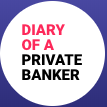
The coronavirus pandemic changed the way wealth management firms operate almost overnight. Gone were traditional face-to-face meetings, with wealth managers having to interact with clients virtually instead.
Firms that were far behind on digital transformation found themselves struggling to adapt to the remote work environment. In a recent webinar, Wealth Dynamix head of functional consultants Travis Morgans discussed four ways technology can support wealth management firms that are working remotely.
Internal communications
“Remote working removes all opportunities for one-to-one interactions that would have happened in an office - the water cooler conversations, the quick chats across a desk,” says Mr Morgans.
Consider the creation of a proposal for a client meeting. In the office that would require a supporting cast of compliance, tax and other advisers pulling together to create a detailed meeting pack for the client. That’s a time-consuming process, but it’s relatively painless when everybody is under the same roof.
Working remotely without technology, however, creates additional headaches. Relationship managers may struggle to access different aspects of a client profile, such as client preferences or recent communication history.
Remote working has also increased the volume of emails and phone calls, making it difficult to keep track of all the information needed to manage complex client relationships.
By using technology, such as a client lifecycle management (CLM) system, client communications can be logged into the client’s dashboard instead of sending email updates. Tasks can be allocated to the right team members as needed.
CLM systems also enable all team members to view the case history and client information in one place, while communications between team members can be reviewed by relationship managers at their convenience.
Automating tasks
“Analogue onboarding processes are a challenge even in an office setting, often involving team members running around the building collecting all the necessary paperwork and signatures,” says Mr Morgans.
Understanding what paperwork is needed typically involves seeking guidance from other team members. In a remote setting, tasks that could have been delegated via a brief chat at a desk are harder to assign, and it’s not always easy for relationship managers to see who is handling a particular task.
Gathering all the data needed to advance a client onboarding, particularly in complex cases, can often result in long email conversations, making it even harder to find the necessary information. Getting an accurate view on the status of an onboarding case is also a challenge, making it difficult to update clients on progress.
CLM systems can help by building automated workflows as soon as onboarding begins. A good system will create a document checklist based on the nature of the case, ensuring all of the necessary paperwork is included. It will also pre-fill those documents before sending to the client for a digital signature.
“By using such a system, relationship managers can quickly check the status of a case, see who it’s with, what the outstanding tasks are, and how much longer it will take,” says Mr Morgans.
External communications
There are three key areas that stifle external communications in a remote setting. The first issue is time. Manually collecting content to create a digital presentation pack for remote client meetings is time consuming, relying on multiple systems and teams.
Second is regulation - different distribution channels will need auditing for regulatory purposes.
And third is tradition. Wealth managers are accustomed to face-to-face meetings with printed portfolio packs; that traditional handshake and hospitality approach is difficult to replicate with virtual meetings.
Technology can help with some of those issues by replacing paper documents with external client portals, while a scaled-down version of a client’s dashboard can also be jointly viewed by screen share during remote meetings.
Regulatory compliance
“Remote working has had a huge impact on the regulatory backdrop, making compliance officers very nervous,” says Mr Morgans. Remote meetings can create regulatory risks around logging certain compliance tasks, such as documenting interactions with clients and communicating follow ups with the compliance department.
Some wealth managers are using digital tools to overcome these potential regulatory blind spots by digitally recording virtual meetings with software that automatically generates PDF meeting notes for compliance teams to review almost instantaneously.
Automated workflows can also allow compliance checks to be performed in parallel to other tasks. For instance during onboarding, cases can be referred to compliance while client data gathering is still in progress.
By adopting CLM technology, wealth managers can avoid the disruptions caused by remote working and ensure all teams across the front, middle and back office can still perform tasks in a seamless manner, while also enhancing those workflows through intelligent automation.
Get the e-book to discover how technology preserves client servicing quality, operational efficiency and regulatory compliance throughout the client lifecycle management process, whilst working remotely.







